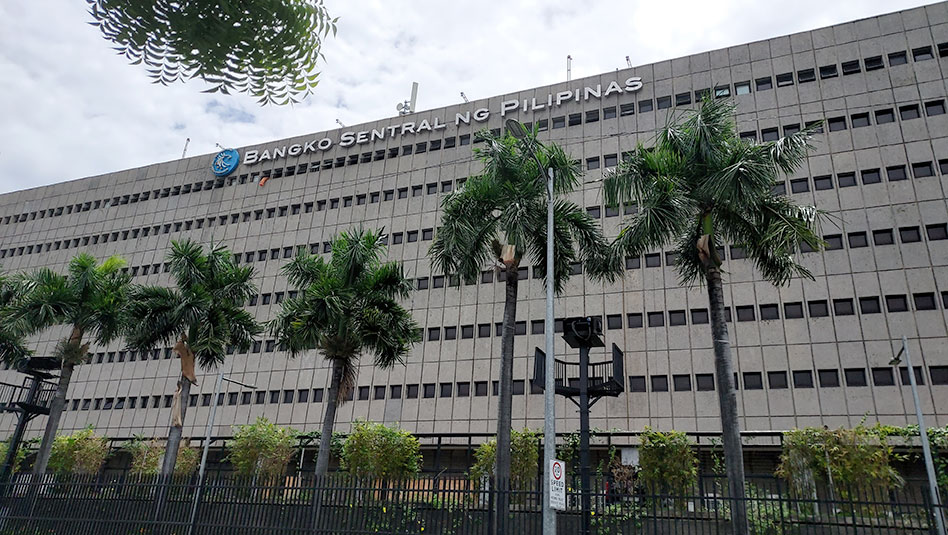




Policy Rate Updates: Closer to BSP’s Goldilocks moment
 DOWNLOAD
DOWNLOAD

Inflation Update: Speeds up but remains below target
 DOWNLOAD
DOWNLOAD

Monthly Economic Update: Fed back on track
 DOWNLOAD
DOWNLOAD


PH bond market’s growth slows in second quarter

The Philippine bond market’s growth slowed in the second quarter versus the previous three-month period, the Asian Development Bank (ADB) said on Monday.
Outstanding local currency (LCY) bonds grew by 1.3% quarter-on-quarter (q-o-q) to P11.7 trillion or $207 billion in the April-to-June period, slower than the 3.1% expansion seen in the first quarter, the ADB’s Asia Bond Monitor report for September 2023 showed.
The Philippine bond market’s growth was the slowest among the seven markets in the emerging East Asia region that expanded last quarter, with the other three recording contractions. Korea’s bond market posted the fastest quarter-on-quarter growth at 2.6%, while Vietnam’s contracted by 4.5%.
Year on year, the Philippine bond market grew by 8.3%.
“In Q2 2023, total LCY bonds outstanding increased on expansions in both the corporate and government bond markets,” the ADB said.
Treasury and other government bonds grew by 2.3% quarter-on-quarter to $175 billion, accounting for 82.4% of the Philippines’ total outstanding debt stock, as issuances exceeded maturities. This was slower than the 3.4% growth seen in the first quarter.
Meanwhile, central bank securities contracted by 15.8% to $8 billion, reversing the 15.8% increase seen in the first quarter, amid a drop in issuances due to easing inflation. These made up 4% of the total stock.
Lastly, the corporate bond market grew by 1.2% to $29 billion, comprising 13.6% of the total debt stock, “due to the large volume of issuances during the quarter, a reversal from the 2.2% q-o-q contraction in the first quarter of 2023.”
“The Philippine corporate bond market remained dominated by the property, banking, and holding firms sectors, which accounted for a collective share of 81% of total corporate bonds outstanding at the end of Q2 2023,” the ADB said.
Meanwhile, total LCY bond issuance contracted by 19.2% quarter on quarter, it said.
“During the quarter, a contraction of 39% q-o-q in the issuance of Treasury and other government bonds was mainly driven by a relatively high base in the preceding quarter brought about by the Government of the Philippines’ issuance of retail Treasury bonds in February amounting to P283.7 billion.” the ADB said.
“Issuance of central bank securities, which comprised 70.7% of total issuance in Q2 2023, contracted 11.2% q-o-q as inflation continued a downtrend for six consecutive months. After a contraction of 81.7% q-o-q in the first quarter of 2023, corporate bond issuance rebounded in Q2 2023 with an expansion of 117.6% q-o-q due to a relatively low base in the previous quarter,” it added.
Meanwhile, emerging East Asian’s bond market grew by 2% quarter on quarter to $23.15 trillion in the April-to-June period, slower than the 2.2% increase seen in the first quarter.
“Government bonds accounted for 62.0% of the region’s total LCY bond stock at the end of June. Association of Southeast Asian Nations markets comprised a collective share of 9.1% of the regional LCY bond total with aggregate LCY bonds outstanding of $2.1 trillion at the end of June,” the ADB said.
Year on year, the emerging East Asian region’s bond market expanded by 7.9%.
“The risk outlook for regional financial conditions is generally balanced. On the upside, softening inflation in the region has led most regional central banks to move toward the end of their monetary tightening cycles… However, the inflation path remains uncertain. Elevated price pressures together with a robust economic performance and strong job market in the US could support further monetary tightening,” the ADB said.
“On the downside, higher interest rates could challenge regional public and private borrowers with vulnerable balance sheets and weak governance… However, vulnerabilities have been present among both public and private sector borrowers since 2022, due to rising borrowing costs and tightened financial conditions,” it added. — AMCS
This article originally appeared on bworldonline.com





 By BusinessWorld
By BusinessWorld